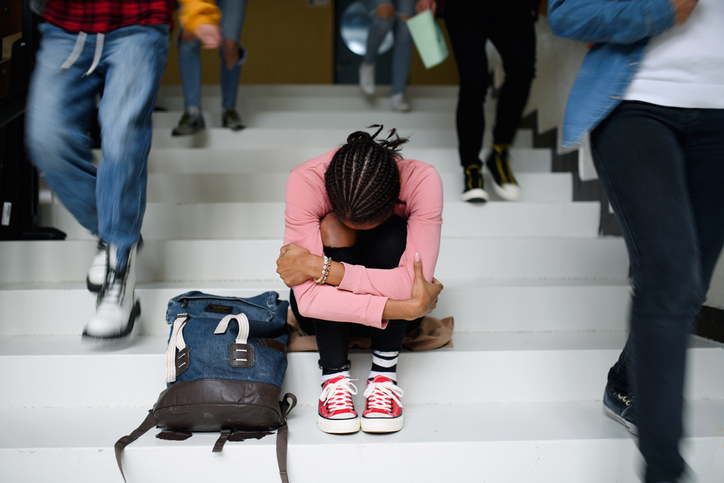
The Centers for Disease Control and Prevention (CDC) recently released a new report of findings from the Youth Risk Behavior Survey (YRBS). The YRBS is a survey conducted every two years of a nationally representative sample of U.S. public and private high school students that monitors health-related behaviors and experiences including social determinants of health and protective factors.
According to the survey data from 2021 and 2022 , the number of teen girls who have reported experiencing sexual violence has increased (from 15% in 2017 to 18% in 2021). This is the first report since the beginning of the COVID-19 pandemic and includes trends in data from the last ten years. Data shows that overall, young people are experiencing a high level of trauma. In particular, girls and LGBQ+ students are experiencing very high rates of violence, poor mental health, and suicidal thoughts and behaviors (the survey did not ask if a student was transgender). Teen girls report the highest levels of sadness and sexual violence in the last ten years, with 30% saying they seriously considered attempting suicide (this is almost a 60% increase since 2011).
2021 Key Findings of Experiences of Sexual Violence by Anyone
According to the report, “In 2021, 11% of high school students were forced by anyone to do sexual things (including kissing, touching, or being physically forced to have sexual intercourse) when they did not want to during the past year (p. 55).”
Schools are a Critical Lifeline
According to this report, more than 95% of young people spend the majority of their daily lives in schools.
This report examined how school connectedness (feeling close to people at school) has a protective impact on students. However, girls, LGBQ+ students, and students who had same sex partners were the least likely to feel connected at school. This indicates that school connectedness provides less protection for these groups, perhaps due to feelings of disconnection with their peers and the adults they don’t feel comfortable reaching out to. The ways that schools support students can have a lifelong impact on struggling youth. Schools can play a role in supporting protective factors, thereby providing a lifeline to young people. The report provided several recommendations for schools, which include:
- Increase school connectedness. Research shows that school connectedness is a protective factor that lasts far beyond the school years. Schools can do this by implementing programs focused on social and emotional learning for early grades and youth development (like promoting supportive youth-adult relationships and creating community connection opportunities for youth) for middle and high school grades.
- Provide professional education. Schools should provide professional learning opportunities to teachers on social and emotional learning, classroom management, and creating inclusive spaces.
- Create safe and inclusive spaces. In addition to providing teacher training on this topic, schools should have updated and effective anti-harassment policies that are equitably enforced. Schools should also create safe and inclusive environments for racial and ethnic minority groups and LGBTQ+ students. When policies and programs are in place to address the needs of groups at the margins, then everyone in the school benefits.
- Connect to local services. Schools can develop relationships with local service programs and providers. Staff can be trained on the services and referral processes, and students can be taught how to access these services.
- Promote health education for all grades. This education should be based on science, medically accurate, developmentally appropriate, culturally inclusive, and LGBTQ+ inclusive. Quality health education teaches sexual consent and communication skills. Schools should have policies in place that foster support for health education, and ensure staff are trained to provide the education with content that promotes healthy development and decision-making.
Schools can serve as a starting point for needed services, connect students and families to community-based resources, and ensure young people have a safe and supportive learning environment. To learn more about the research and steps for prevention, visit the additional resources below.
Additional Resources:
- CDC Media Briefing on the YRBS Report, CDC: U.S. Teen Girls Engulfed in a Growing Wave of Sadness and Violence (transcript)
- CDC outlines opportunities for Preventionists following survey on youth violence and mental health (blog from PreventConnect)
- CDC’s program “What Works in Schools” is an evidence-based primary prevention approach that supports schools to improve school environments to make them safer and more supportive.
Resource Topics Children
